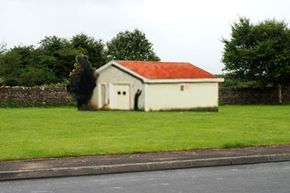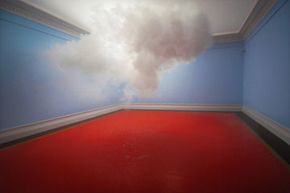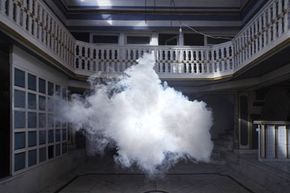Berndnaut Smilde, an Amsterdam artist, has been making indoor clouds since 2010. They only last for a moment -- he preserves them in photographs -- which means that the artistic effort rests entirely in preparation for the event. While the pictures we see give the impression of a captive cloud, something you could perhaps buy tickets to see, it's an illusion: The photos are actually built up over the formation of several different clouds in a given space.
While that may sound disappointing at first, it's actually right in line with Smilde's artistic ideals, as he is very interested in the way images are seen and used. For example, one of his biggest (non-cloud) pieces is a near-life-size picture of a barn -- he installed the photo outside Askeaton, in West County Limerick, Ireland -- and it perfectly encapsulates the artistic reasoning behind the clouds that have now become his biggest hit.
Advertisement
The artist discovered that if you look up Askeaton on Google Street Maps, you'll be directed to a town called Askeaton in the U.S. He photographed the barn in North America and then installed the photo, life-size, outside the Irish city. The concept is that Google's photographing trucks might pick it up, putting the same building's image in both virtual locations. When viewed online, the same building would exist in both places, since you're only ever looking at an image.




